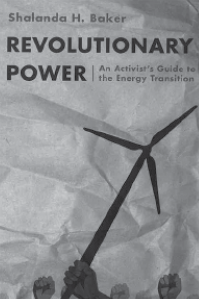Agencies Promote Tools to Shore Up Climate, Clean Energy Agenda

Before the surprise news that Senator Joe Manchin (D-WV) had agreed to a $369 billion climate and tax package, federal agencies confronting significant legislative and legal setbacks were supercharging administrative tools to advance President Biden’s climate and clean energy agenda. As a for instance, responding to the Supreme Court’s ruling in West Virginia v. EPA, the agency’s administrator, Michael Regan, said it can still regulate climate pollution, and would “use all of the tools in our toolbox to do so.”
And a few weeks later, after legislative negotiations with Manchin seemed hopelessly derailed, Biden stated that if Congress won’t act he will take “strong executive actions” to “create jobs, improve our energy security, bolster domestic manufacturing and supply chains, protect us from oil and gas price hikes in the future, and address climate change.” Advancing these diverse goals will require Biden to go into “executive Beast Mode,” Senator Sheldon Whitehouse (D-RI) suggested.
Now that the Manchin deal could mean Biden’s climate agenda will be resuscitated, helping to take the world off what the UN has warned is a “fast track” to disaster, the panoply of tools that agencies are deploying remains highly significant. Among them, the Federal Energy Regulatory Commission’s “clean energy future” initiatives are critical, even if uncertainties lurk in the Supreme Court’s West Virginia ruling.
On June 16, FERC flagged threats to the electricity transmission system from extreme weather. It proposed that transmission providers submit reports on how they assess their vulnerability to cold snaps (remember Texas’s grid failure during the February 2021 winter storm?), heat waves, drought, and major storms. Providers should also identify their mitigation strategies. In a companion proposal, FERC recommended revising a current electric system reliability standard to strengthen long-term planning for extreme weather events. Acknowledging the climate writing on the wall, FERC Chairman Rich Glick commented that the proposals were “necessary to ensure that we are prepared for the challenges ahead.”
In a more far-reaching undertaking, FERC is taking steps aimed at fixing two of the biggest hurdles to building much-needed transmission lines that will be critical for, among other things, bringing online new wind, solar, and other clean energy technologies as they replace carbon-emitting fossil-fuel power plants. Those hurdles are, first, planning for new transmission and, second, paying for it.
Responding to broad support for addressing those and related issues—including support from nine former FERC chairs—the commission in a 4-1 bipartisan vote this April approved what Glick described as the “first effort at major transmission reform in a decade.” They propose replacing a piecemeal, lack-of-planning approach with a long-term, forward-looking transmission planning system that would require electric utilities to identify the transmission needed to accommodate changing resources, such as energy storage and renewable energy, and to consider extreme weather risks. FERC’s proposed new rules for deciding who pays for transmission facilities would draw on a broader definition of benefits that could spread the costs more widely by anticipating, for example, dispersed future generation.
According to Glick, the proposed reforms mark “a critical first step” as the United States “continues to aggressively transition to a clean energy future.” No doubt, FERC’s proposals could provide tools essential to Biden’s beleaguered agenda.
Look for the administration to take diverse measures to keep momentum going despite challenges, such as the Energy Department’s July 13 announcement of $2.6 billion in funding to “slash carbon emissions” through carbon capture and transport programs and DOE’s July 14 announcement of $56 million in funding for solar manufacturing and recycling innovations.
But look, also, for possible further roadblocks that could be thrown up under the West Virginia ruling’s use of the “major questions doctrine” that stipulates Congress must provide “clear” authorization for any broad regulatory action that could be “transformative” to the national economy.
Harvey Reiter, a partner with Stinson LLP, suggests it is premature to say whether anyone will, for example, challenge FERC’s transmission proposal, because the rule is not yet final. But, he adds, in its West Virginia ruling the Court struck down an Obama-era rule EPA had “no plans to implement.” In addition, the Court’s ruling is “virtually standard-less,” so a party could raise the major questions doctrine on appeal to any final FERC transmission rule, Reiter says. Indeed, what constitutes a “major question” is so broad that it “invites parties to make such challenges,” he says—though adding that whether such a challenge would succeed “is an entirely different question.”
Agencies Promise Tools to Shore Up Climate, Clean Energy Agenda.






